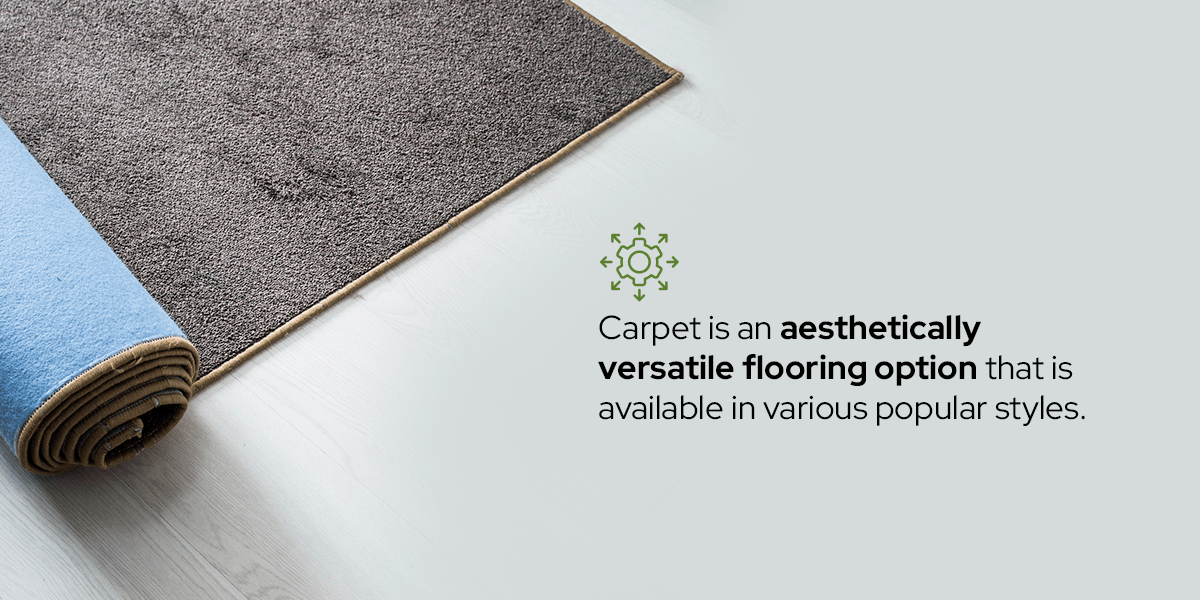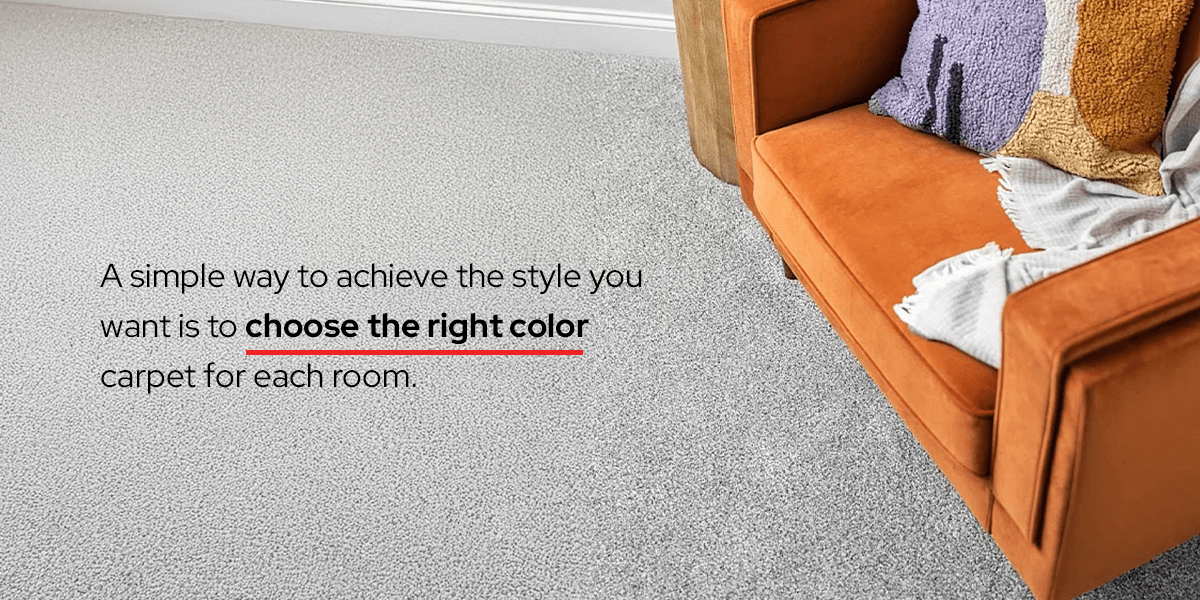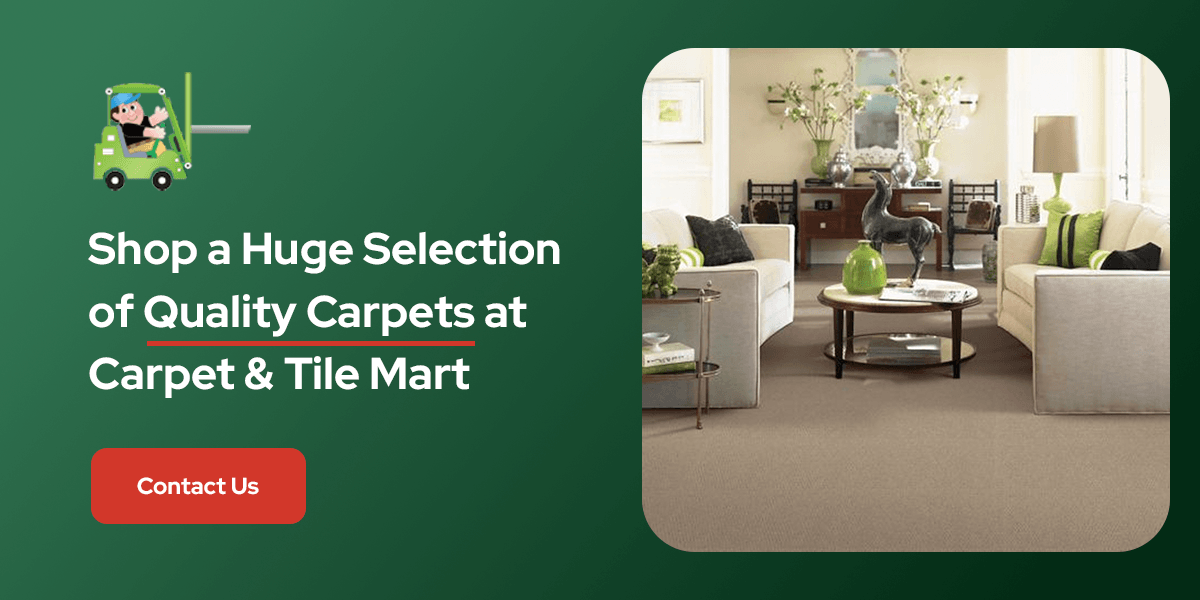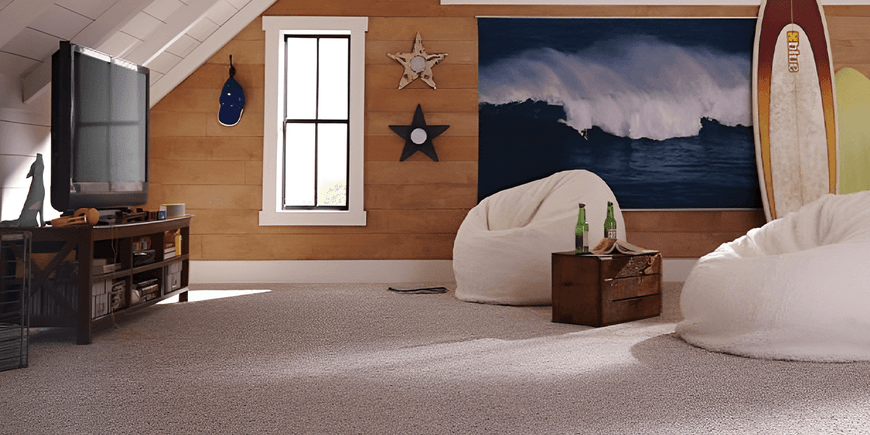How To Buy Carpet
Posted by Ben Garelick (@BlueShirtBenny) on 18th Apr 2025
Buying carpet for your home is a beautiful and effective way of elevating your space. Carpet is often seen as luxurious as it brings comfort and warmth to a room, creating a cozy atmosphere.
Before buying carpets, there are several important factors to consider. Carpet comes in a variety of materials and styles. The type you need will also be different depending on your lifestyle, aesthetic preferences and each room's functionality. You also need to consider how to measure rooms for carpets and the benefits of professional installation or DIY.
By exploring this comprehensive carpet buying guide, you can make an informed decision that helps you create the home you desire.
Benefits of Carpeting
Carpet is one of the most popular types of flooring in American homes for good reason:
- Enhanced atmosphere: Because of the beautiful materials carpets can be made from, they easily add a new dimension of elegance and sophistication to a room. This is especially true if the carpet is made from high-end materials like wool and nylon. Since carpet is fabric, it also naturally adds warmth to a space. These features help your home appear more inviting and comfortable.
- Good noise reduction: Carpet effectively absorbs noise from feet and moving furniture. It is the best type of flooring for dampening sound, which is why it is the top choice in rehearsal rooms. Around the house, carpets noise-reducing properties can help create a more peaceful and quiet environment.
- Slip resistance: Carpet is the best flooring choice if you need floors with a lot of traction. The fabric fibers provide slip resistance and a softer surface for fall protection. Having carpets can bring you greater peace of mind for older adults, young children and family or guests with mobility needs.
- Versatile aesthetics: You can use carpet to style your home and match any aesthetic you want. It is available in an extensive range of colors, textures, patterns and even pile height. Considering each of these style aspects is important for achieving your desired look. You can also use carpet to define a space and create a visual interest that compliments your furniture and decor.
- Greater insulation: There is a good reason people say carpet “adds warmth” to a room. While this often refers to the welcoming environment carpet creates, carpet is also more insulating than flooring like tile and hardwood.
- Flexible costs: Carpet is available at all different price points. You can get quality, budget-friendly options and higher-end carpets made from natural fibers. Carpet can be more affordable than some flooring types like hardwood. Professional installation is also more cost- and time-effective than many alternatives.
- Added advantages: Carpet offers a range of other benefits to suit different households. You can choose a stain-resistant carpet that is easy to clean and perfect if you have children or pets. Carpet is more comfortable than tile or hardwood for standing or sitting for extended periods of time, which is a great ergonomic benefit for busy homes.

Understanding Carpet Types
Carpet comes in a variety of pile heights, styles and fibers. Each has a unique appearance and different levels of softness, stain resistance, insulation, cost-effectiveness and overall quality and performance. Each fiber and style offers unique benefits to suit your preferences and home's needs.
Carpet Fibers
Carpet can be made from natural fibers, synthetic fibers or blends:
- Wool: Wool carpets are as luxurious as it gets! Since wool is a natural fiber, these options are the softest you will find. Wool carpets are long-lasting and beautiful — they instantly elevate a room, adding elegance, warmth and comfort like no other fiber. Genuine wool carpets are more expensive than carpets, but they are made of quality fabric with good stain-resistant and water-resistant properties. It is important to maintain your wool carpets carpet carefully to prevent mildew.
- Nylon: Nylon is a popular fiber found in many synthetic carpets. Compared to natural fibers like wool, nylon is generally more affordable. However, it is more expensive than other synthetic fibers as it has quality features like mold and mildew resistance and the ability to hold its color well. It is also a soft but durable synthetic that can last a long time if well-maintained.
- Polyester: Polyester is also a common synthetic fiber for carpets. As with other synthetic fibers, it is more hypoallergenic than carpets made using natural fibers. Polyester is an excellent choice for carpets with vibrant, bold colors because it is fade-resistant. A specific type of carpet, polyester/ PET, is manufactured from recycled plastics, making it a more sustainable flooring option. If picking carpets made of polyester, it is best to have them in low-traffic areas. Oil stains are tough to remove from polyester, and the fabric isn't as durable as other synthetics.
- Polypropylene/olefin: Polypropylene, or olefin, is a synthetic fiber that is stain-resistant and more affordable than nylon, but it is not as resilient. The fiber can hold onto oils, which can cause a buildup of dirt. Thankfully, it is relatively easy to clean.
- Acrylic: Acrylic carpets have some standout features — they are quite resistant to fading, moisture and mildew. The fabric is sometimes referred to as "synthetic wool" because of its natural look and feel. Acrylic is often used with wool to create carpet blends. It is best to choose acrylic carpets for low-traffic areas, though, as they are not as durable as other synthetics.
- Blends: Some carpets can be a blend of synthetics or a blend of natural and synthetic fibers.
Carpet Styles
Carpet is an aesthetically versatile flooring option that is available in various popular styles. The two primary carpet styles are cut pile and loop pile, and there are different carpet designs within these two categories:
- Plush/velvet: Plush carpets are a type of cut pile carpet, which means that it is sheared to expose the ends of the fibers. As the name suggests, plush carpets have a soft and velvety surface that gives the carpet a refined look.
- Frieze: Frieze carpets are cut-pile with twisted, kinked and uneven-length fibers. They are excellent for creating a textured and casual look.
- Saxony: Saxony carpet is also a type of cut-pile carpet with a plush texture and distinct twists in the fabric that make it uniquely luxurious.
- Berber: Berber carpets are a type of loop pile carpet, which has uncut, textured surfaces that are perfect for creating a casual and relaxed aesthetic.
- Level-loop and multiloop: Level loop-pile carpets have loops that are all the same height, while multiloop carpets have loops of varying heights. Level-loop carpets have a sift but uniform look, while multiloop carpets appear patterned and textured.
- Cut-and-loop: These carpets have a combination of cut-pile and loop-pile fibers that create a good blend of durability and visual dimension.

Low-Pile Carpet vs. High-Pile Carpet
Pile height refers to the length and density of a carpet's fibers. Low-pile carpets have shorter fibers that are densely grouped together in loops. High-pile carpets have looser, longer fabrics. Low-pile and high-pile carpets have different advantages in terms of performance and aesthetics:
- Low-pile carpets generally have a smooth and firm appearance. They are not as cushioned and soft as high-pile carpets, but they are durable and well-suited to high-traffic areas like hallways and dining rooms. Low-pile carpets are easy to clean and maintain. Examples of low-pile carpets include Saxony and Berber.
- High-pile carpets have a soft, luxurious and plush appearance, which adds comfort and warmth to any room. High-pile carpets require more maintenance and cleaning than low-pile and are best suited to low-traffic areas like the bedrooms. Examples of high-pile carpets include plush and frieze.
Assessing Your Needs
Every house is different. Yours may be more high-traffic, or you may have older adults, young kids or pets living in the home. You also have your own stylistic preferences to consider. Assessing these factors can help you find the right carpet for your project.
Room Functionality
Different carpet materials and styles have unique characteristics that make them more suited to specific rooms in your home. Durable, stain-resistant and low-pile carpets are best for high-traffic areas, including entryways, passages, living rooms and dining areas. Soft, plush and high-pile carpets are best reserved for low-traffic areas.
Lifestyle
As with room functionality, it is vital to choose carpets that will support your lifestyle. If you have a busy home with young children and pets, then durable, stain-resistant carpets made from synthetic materials may be best. You might also choose cut-pile designs to minimize the chances of snagging. If you have a quieter home or want to build around luxury and elegance, natural fibers and plush carpets can be a great choice.
Aesthetic Preferences
Every aspect of your home should reflect your style and personality — including your carpets. Apart from style, a simple way to achieve the style you want is to choose the right color carpet for each room.
Light-colored carpets brighten up a space and achieve a minimalistic and modern look. They are best suited to low-traffic areas like guest bedrooms. If you would like a lighter color in your living and dining areas, neutral shades like tan, brown, beige and gray can work well.
Dark-colored carpets can help you create cohesive spaces with an intimate and warm atmosphere. They are also good for adding texture and visual interest to a room.
Another excellent way of adding visual interest to a space is to use bright-colored carpets for a vibrant and bold effect. Bright carpets are perfect for playrooms, children's bedrooms and entertainment areas.

Shopping for Carpet
Once you know how to pick a carpet that suits your needs and preferences, it's time to shop! You will need to measure your rooms to know how much carpet to buy, explore carpet padding and know where to shop for quality carpets at the best prices.
How to Measure for Carpet
To measure your rooms, you only need a good tape measure and a notepad to jot down your measurements.
- Measure the room's length and width and note the longest and widest points. Include doorways and alcoves in your measurements.
- Make sure to take a few measurements across the room, wall to wall.
- Note your measurements accurately.
- Add a few extra inches to your measurements — around 4 inches to the length and width should suffice — to account for seams and waste.
Why It's Important to Consider Carpet Padding
Buying padding with your carpet purchase is highly recommended as it can extend your flooring's life span and provide a greater degree of insulation and cushioning for comfort underfoot.
When buying padding, consider thickness and weight. The thicker the padding, the more “give” the carpet will have. High-traffic areas generally do well with thinner padding with a heavier weight, while thicker padding works well for less busy areas like the bedrooms. Thinner padding also works better for low-pile carpets.
Where to Buy Carpet
The best place to purchase carpet is from a flooring supercenter that has physical locations so you can browse your options and ask professionals for guidance as needed. Buying from a flooring supercenter gives you the most access to the widest range of quality carpets at the most competitive prices.
Carpet Installation Consideration
Once you have your carpets, it is vital to consider DIY vs. professional carpet installation — this step will help you finalize your flooring and streamline your home project.
DIY carpet installation may be a viable option if you have the right tools, budget, time frame and good DIY skills. If you are considering this option, it is vital that you check the warranty on your carpets to ensure you will not void them by installing them yourself.
Professional carpet installation is generally recommended for most home projects for several reasons:
- A professional installation is more likely to have a neater and more aesthetically pleasing result.
- Professionals have all the skills and tools to install carpets quickly and seamlessly.
- With a professional installation, there is no need to buy carpeting tools.
- If there is a warranty on your flooring, a professional carpet installation will not void it.
Shop a Huge Selection of Quality Carpets at Carpet & Tile Mart
Picking out carpets is an exciting journey as you transform your home into the space you dream of — and Carpet & Tile Mart is here to help!
We have a huge selection of carpets in different styles and colors that suit every preference. We are a flooring supercenter that prioritizes customer experience by offering extensive quality flooring choices at competitive prices.
Visit one of our store locations to shop for carpets, rugs and other flooring options or contact us online for any additional information.




